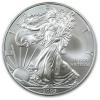| Online: | |
| Visits: | |
| Stories: |

| Story Views | |
| Now: | |
| Last Hour: | |
| Last 24 Hours: | |
| Total: | |
We Have Entered The Mania Phase: Market Complacency Has Never Been Higher
More than merely a subjective, psychological state, the complacency of market participants can be effectively quantified, which is precisely what Deutsche Bank’s David Bianco has done by looking at the ratio of the market’s P/E to implied vol or VIX.
As Bianco notes, “our PE/VIX market emotion indicator climbed to 1.3 on S&P trailing PE of 18 and 3m avg VIX of 14. A level between 1.2-1.5 signals complacency. There was similar complacency going into summer last year, with S&P trailing PE at 17.5 and a calm market kept VIX at 10-14. The complacency persisted to July but then faded as the risk of higher yields came on falling unemployment, but yields ultimately stayed subdued preventing any major summer sell-off. Yet a selloff began in late Sept as oil prices started cracking and the dollar climbing.”
And while the 3M trailing average may be at “only” at 1.30 suggesting prevailing complacency, the chart below shows that on a daily basis, the PE/VIX ratio just hit 1.49x – it has never been higher, and again based on DB’s estimation, market sentiment has now crossed from the complacency zone into outright Mania.
The last time this ratio was at the current level: late 2007/early 2008, just before the Fed had to launch a multi-trillion bailout to save capitalism as we know it.
So is a correction imminent? Depends on one’s definition: Deutsche sees the probability of a 5% correction as “high”, although the question is whether the S&P will slide by 10% or more in the coming months. One look a the chart below shows that it has been over three calendar years or 916 trading days since the last 10% market drop, the third longest period in history without a 10% drop, so yes: one could say we are indeed overdue.
From DB:
We believe the probability of a 5%+ dip is high this summer and our tactical call remains Down given the S&P now at an even higher PE than a year ago, heightened uncertainty in 10yr yields, weak earnings growth and continued soft economic data. We haven’t had a 5%+ dip this year. Historically 5%+ dips are common and happen at least once a year since 1960, except 1964, 1993 & 1995. It has been 916 trading days (3.6 years) since a 10% correction. Selloff triggers could be a further rise in 10yr yields especially if UE keeps falling amidst slow economic growth and Fed remains unclear on first hike timing, or a jump in the dollar upon the Fed expressing firm intentions to hike in Sept.
Of course, the time since a 10% correction would have been far, far shorter had Bullard not popped up in October when the market had plunged 9.8% in the matter of days, only for the Fed “hawk” to suggest that should the market selloff continue, the Fed can always do QE4.
Which is why even a token 10% market correction here could be catastrophic: since the BTFD and BTFATH “mentality” is now purely driven by faith that the Fed will never let the market drop again, anything suggesting a loss of control by the market could become a self-fulfilling prophecy, and all those who suggest that a 10% drop is just what the market needs, is cathartic and so on, may find that suddenly there is not a single BTFDer left once stocks do drop by 10.1% or more…

![]()
Source: http://silveristhenew.com/2015/05/24/we-have-entered-the-mania-phase-market-complacency-has-never-been-higher/





